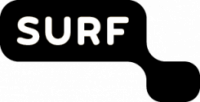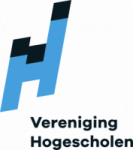 About us
About us
Higher Education Institutions (HEIs) have a unique ‘open’ character, due to their social assignment, both in physical space and in mentality. This open character is vital to create the optimal setting to learn, teach and research. At the same time HEIs have to offer a safe environment to their students, teachers, researchers and staff. In the Netherlands, this challenge is addressed by the Platform ‘Safe and Open Higher Education’, a cooperation of HEIs in the Netherlands.
This Platform aims to support HEIs with an integrated approach to security issues by combining expertise, acting in concert and providing resources, tools and processes to monitor risks and making them manageable in a sustainable way. Often incidents and measures result in the simultaneous existence of multiple management systems for various security aspects, but often without a general overview, hindering an approach based on cohesion and synergy. However, different safety & security aspects share common ground and affect one another.
Therefore, the participants in this Platform have developed an integrated safety & security management system that HEIs can use to help design their safety & security systems with which board members can carefully weigh choices to balance safety and openness. The manual can be seen as a framework that provides references to practical approaches for various sub-areas where synergy can be achieved via activities including risk analysis, selection of measures, organisation, implementation, documentation, evaluation and reporting. It also contains a questionnaire for self-assessment.
Vision: Integrated Safety & Security
HEI’s need to make conscious choices on how to deal with risks like cybercrime, abuse of personal data, fraud, alarming behaviour of students and inexplicable or unethical behaviour of employees or managers, spying etc. An integrated approach to these risks reduces the chances of incidents and the costs associated with these incidents. It also increases the safety awareness of the institution. By approaching the many risks in conjunction with each other, a complete picture of the various safety & security situations is created that provides insight into the institution’s maturity level. This improves the management and control of all safety functions.
Process steps in short:
- Risk management: Risk management is about making an inventory and assessing the possible risks by examining the relationships between threats, interests to be protected, and security aspects
- Policy: In an integrated approach, the different departments and officials must work together, so that structural attention is paid to the prevention and management of unsafe situations.
- Organization: once the policy is determined, the policy must be organized and implemented within the institution. Governance is key during this procedure: do not consider the integrated approach only as part of the business operations, but also as part of the institution’s corporate risk management policy.
- Awareness: An integrated safety policy is only effective when the employees and management within the institution are fully aware of these policies. Well informed and motivated employees and students who want to work and study safely, are keys to a successful integrated approach.
- Crisis management: When using crisis management and Business Continuity Management (BCM) you prepare in advance for possible scenarios that may occur when crises strike, to ensure that business continuity is guaranteed during and after these crises.
Portfolio:
The tools that the Platform Safe & Open has developed are free to use. Below a list of tools in English:
Internationalization has become crucial for HEI’s. There are risks associated with both sending students abroad as well as hosting foreign students. HEI’s struggle to reduce these risks without losing their open culture and environment. To help HEI’s with this struggle, CrisisLab has written the report ‘Risk Analysis Higher Education Institutions’, commissioned by the platform Safe & Open Higher Education. In this report, you will find a broad range of risks that might threaten HEI’s, as well as tips and advice on how to manage these risks.
The ‘Integrated Safety and Security for Higher Education’ project aims to support HEI’s with an integrated approach to safety and security issues by combining expertise, acting in concert, providing resources for monitoring risks and making them manageable in a sustainable way. This manual is the first of its kind for higher education and aims to provide footholds for achieving synergy in safety and security policy through an integrated approach.
- E-learning Alarming Behaviour (radicalization, aggression & suicide)
In HEI’s, teachers are amongst the first who will notice signs of alarming behaviour in students. However, teachers do not always know how to interpret these signs or how to act on them, which may lead to students receiving necessary aid too late, or not at all. To help teachers and other professionals recognize these signals as well as offer them an action perspective, the platform Safe and Open Higher Education has developed an e-learning on alarming behaviour and an Escalation Ladder which shows how HEI’s can deal with the various forms of alarming behavior.
On June 20, 2016, approximately 200 board members and experts from Higher Education Institutions came to the Safe and Open Higher Education conference in Rotterdam. This conference dealt with the question how HEI’s can be both open and safe environments for students and staff. Via the link above you can find several tools and interesting video’s.



